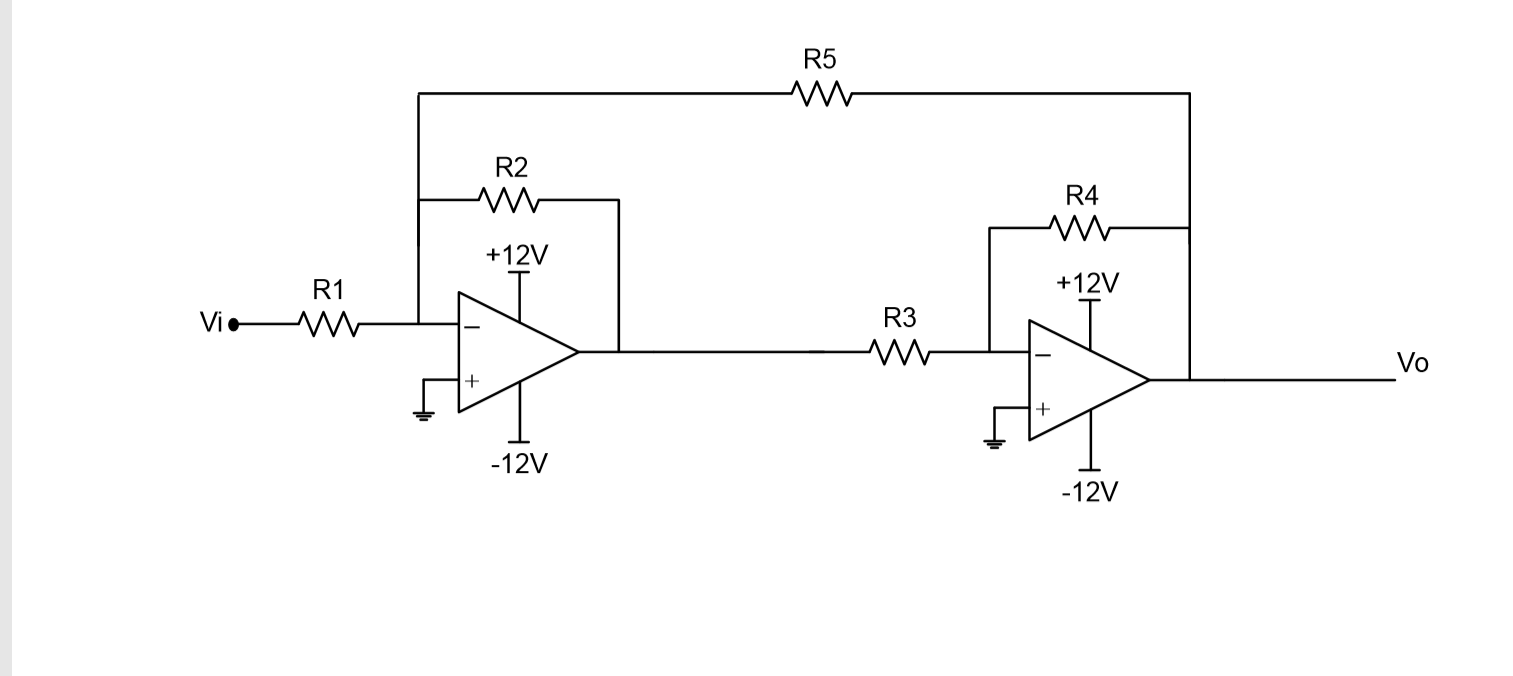Second opamp has a voltage gain of -R4/R3 = -1.
First opamp is a virtual earth current to voltage stage, having a gain of -R2 mho.
The overall gain has two inversions so the voltage across R5 is trivially Vo because it feeds a virtual earth, making the current in R5 Vo/R5.
Input current is Vi/R1 as first opamp inverting input is a virtual earth, so total current at that node is Vi/R1 + Vo/R5.
Gain of first opamp is -R2 mho, and gain of second one is -1, so effective forward path gain is R2 mho.
Vo = (Vi/R1 + Vo/R5)R2 = ViR2/R1 + VoR2/R5.
Vo - VoR2/R5 = ViR2/R1
Vo(1-R2/R5) = ViR2/R1
Vo = Vi(R2/R1)/(1 - R2/R5)
Vo = Vi (10k/1k)/(1 - 10k/20k) = 10 * Vi / 0.5
Gain Av = 20 = +26dB.
Someone check my arithmetic!
Note that while each individual opamp is running at a noise gain of at least 2, the overall positive feedback may hurt phase margins and some care may be required to avoid HF instability.
What individual voltages does pspice show, I mean if you measure input and output voltages separately do you get what you expect?
Spice can have issues with numerical convergence sometimes, I would be surprised to see it here, but it is not impossible.
For the second bit, look at the datasheets for the output swing in terms of supply voltages, divide by Av, not hard.

